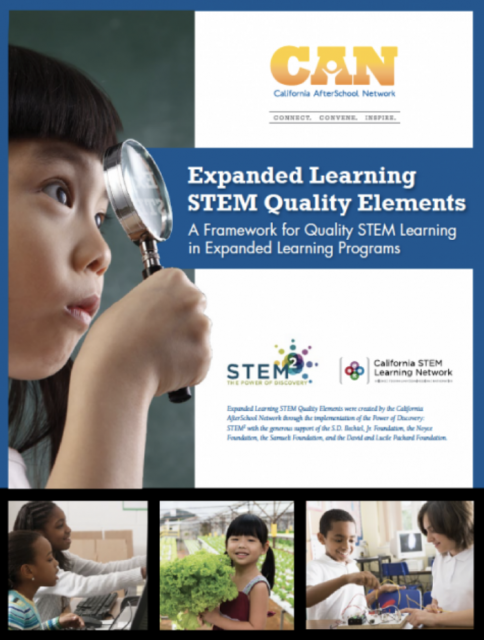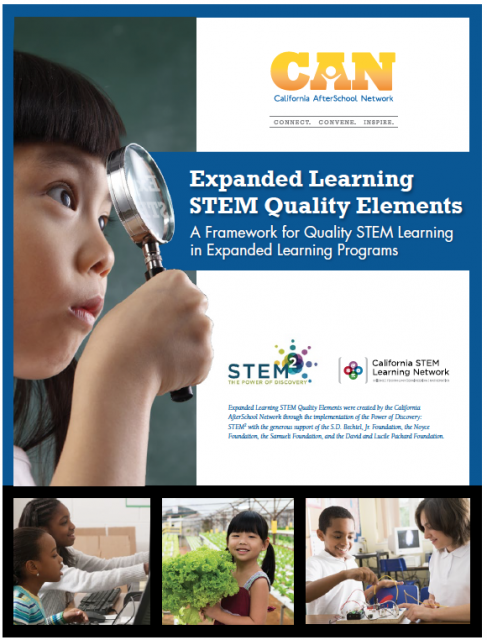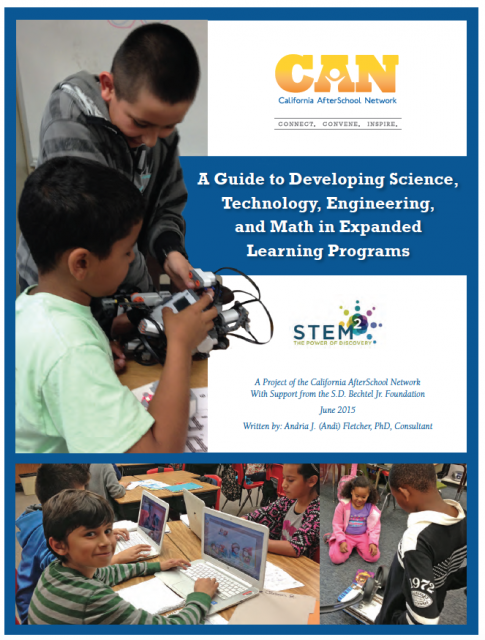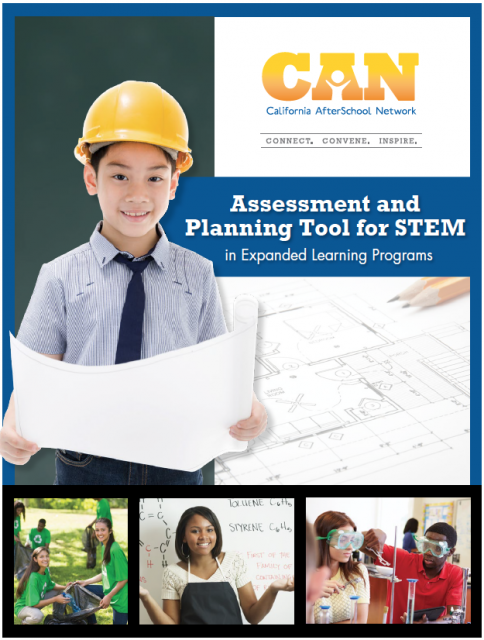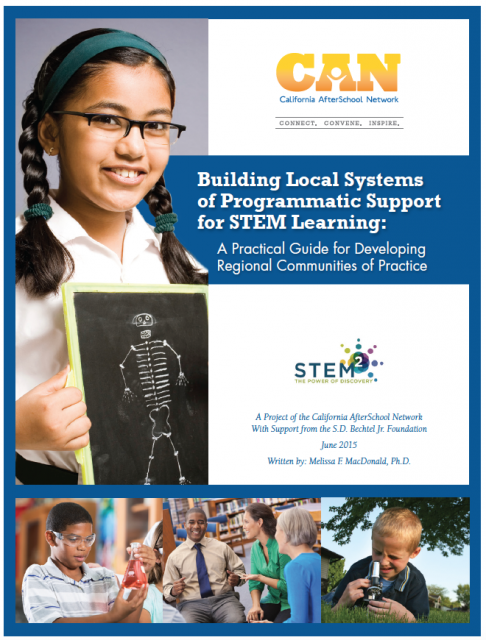Resources to Support STEM Learning in Expanded Learning Programs
Implement and continuously improve STEM learning in your program with this suite of publications:
Related Content
Expanded Learning STEM Quality Elements
A Framework for Quality STEM Learning in Expanded Learning Programs
This document addresses the questions:
- Why should I implement STEM in my expanded learning program?
- How do you define and describe what Quality STEM Learning looks like in expanded learning contexts?
A Guide to Developing STEM in Expanded Learning Programs
This guide outlines promising practices for STEM implementation in expanded learning programs based on lessons learned through the implementation of the Power of Discovery: STEM2 Initiative. The guide centers around five central practices (outlined below) each supported with examples from California’s expanded learning programs. The five practices the guide focuses on are:
Assessment and Planning Tool for STEM in Expanded Learning Programs
High quality STEM in OST is engaging and enriching for youth and can be a valuable professional development opportunity for staff. Taking time to get clear about how STEM supports your program’s goals, and how your staff will be supported in leading STEM activities will help to ensure success. Strong STEM programs need big picture STEM learning goals that are linked to the program goals and/or school goals.
Building Local Systems of Programmatic Support for STEM Learning
A Practical Guide for Developing Regional Communities of Practice
Communities of Practice (CoPs) are emerging as a promising strategy for building sustainable peer networks that ultimately can function as systems of support within a local region. The content of this guide is based upon the work of the Power of Discovery: STEM2 Initiative.
Collaborate to Innovate
A resource designed to facilitate K-12 and expanded learning collaboration for quality STEM learning
The Next Generation Science Standards work group of the CAN STEM Committee recently released Collaborate to Innovate: Advance Common Core and Next Generation Science Standards Through K-12 and Expanded Learning Program Partnerships. Collaborate to Innovate describes the opportunities for collaboration created by new K-12 standards and the Quality Standards for Expanded Learning Programs in California. The document outlines specific strategies and resources t


